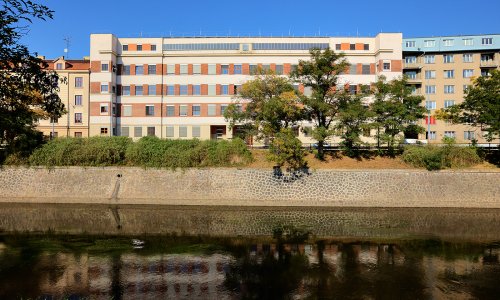The 1920s brought busy development in Kounicova Street, which was intended to be a formal link connecting the centre of Brno with newly associated district of Královo Pole. The Private Clerk and Employee Sickness Fund building grew at the junction with present-day Zahradníkova Street, near Kumpošt's administrative buildings. This Prague-based organization addressed architect Jaroslav Syřiště with a request to design the building; his project features influences of Prague rondo-cubism architecture.
The functional layout of the interior areas of this corner building was designed to meet the conditions for the state's subsidy pursuant to the Building Act; the office areas only occupied the ground floor and the mezzanine, while the upper levels housed 20 apartments. The administrative part was also emphasized on the facade by artificial stone cladding with the company's initials. This prominently segmented garland of the geometrical decoration is repeated on the top floor; the two-colour facade enhances the overall relief impression created by the rondo-cubism.
PH

